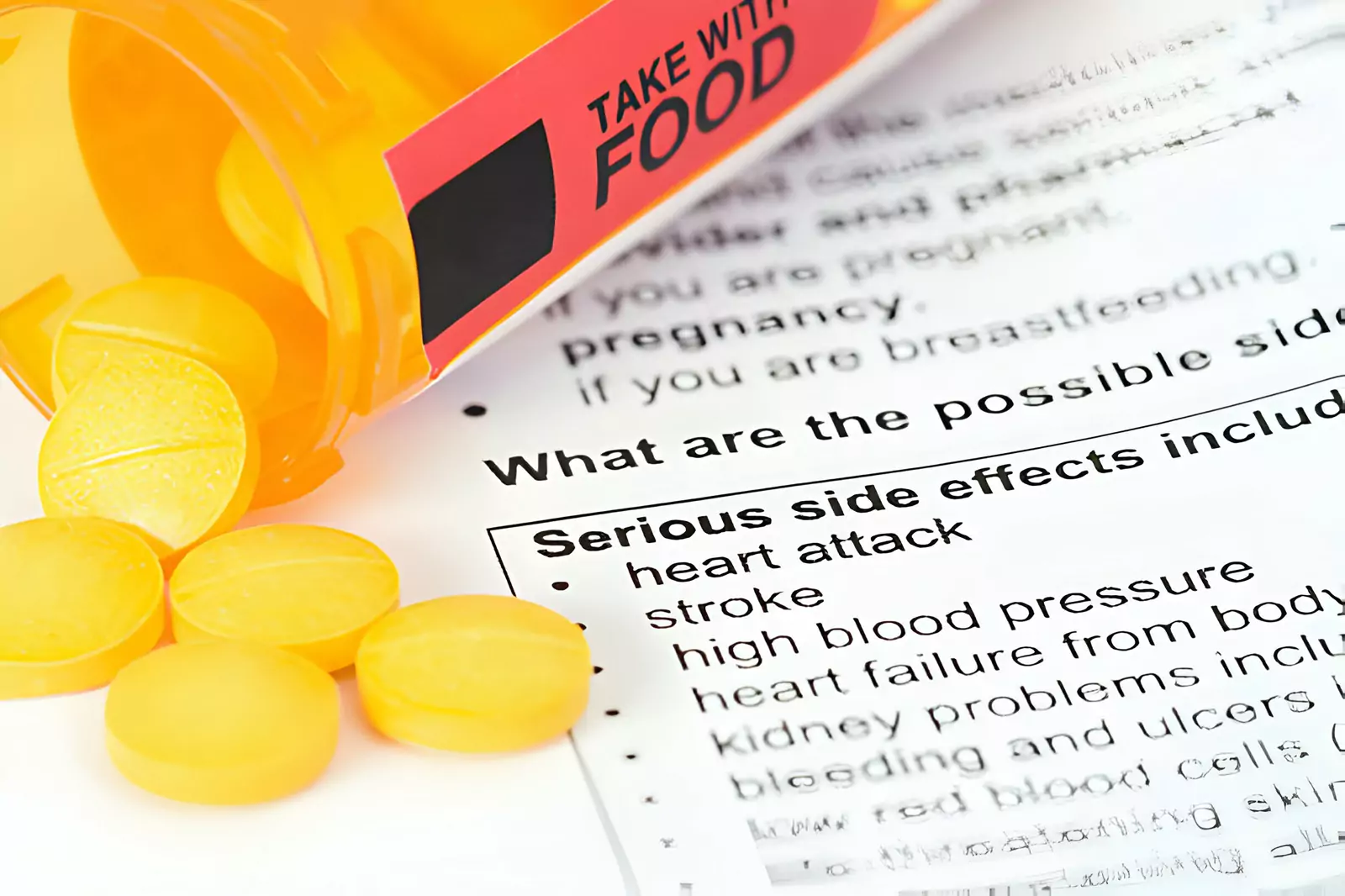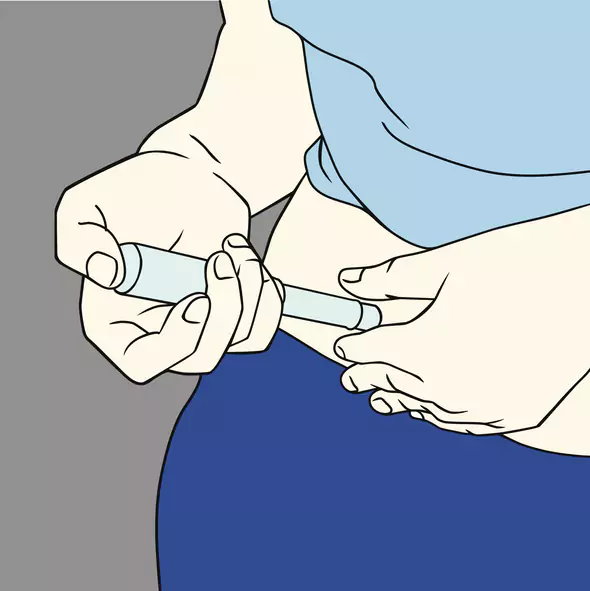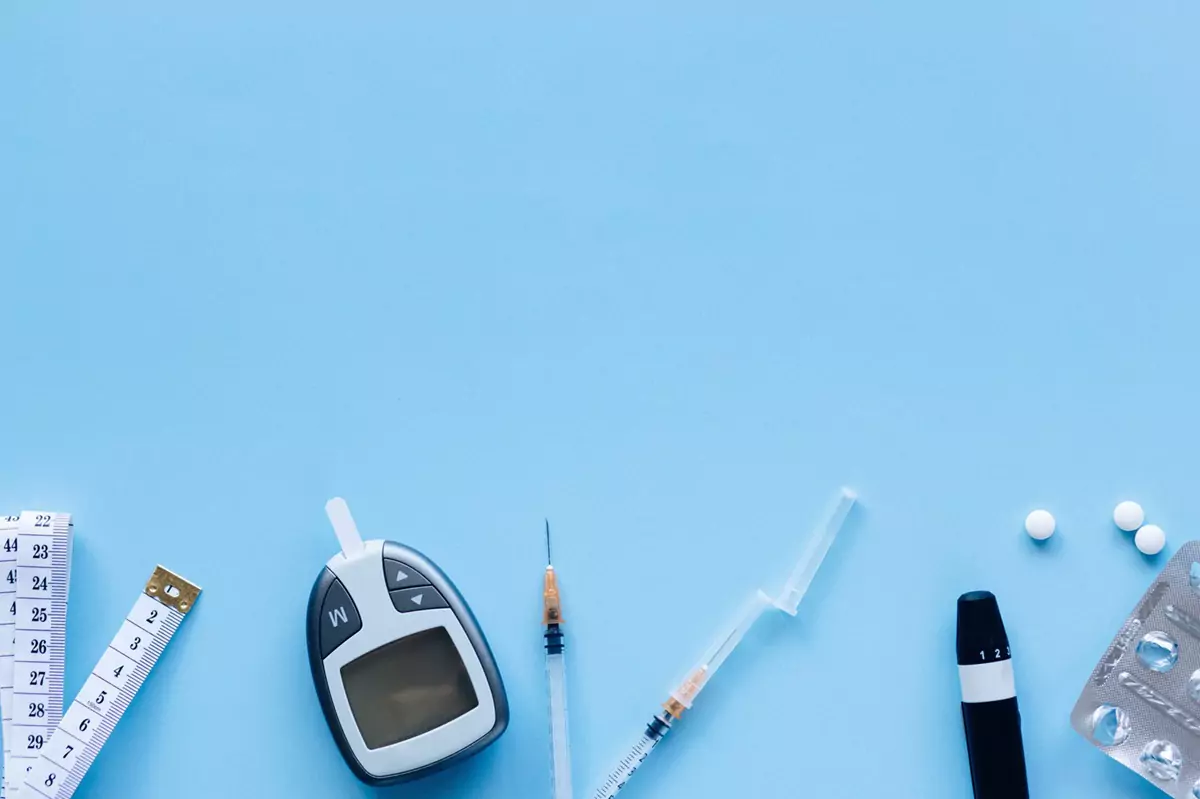
25% OFF Site Wide






11 Tradjenta Side Effects: Common, Mild and Serious


Table of Contents
- Introduction
- Common Side Effects of Tradjenta
- Headache
- Diarrhea
- Upper Respiratory Infections
- Hypoglycemia
- Weight Gain
- Mild Side Effects of Tradjenta
- Sore Throat
- Taste Changes
- Urinary Tract Infection
- Serious Side Effects of Tradjenta
- Pancreatitis
- Low Blood Sugar
- Skin Rash or Blisters
- Frequently Asked Questions
- Does Tradjenta cause weight loss?
- Does Tradjenta cause Fatigue?
- Does Tradjenta cause Hair loss?
- Does Tradjenta cause Burping?
- Does Tradjenta Cause Joint Pain?
- Conclusion
- About The Author
Introduction
We've all heard about the many medications out there that promise to help manage diabetes, but what about the side effects? In this article, I will share 11 Tradjenta side effects - both common and serious - and explore how to recognize and manage them. I will also explain the risks associated with this popular diabetes medication and provide tips for staying safe. So if you're considering taking Tradjenta, make sure to read this article for all the details you need to know.
Common Side Effects of Tradjenta
Headache
Headache is one of the common side effects of taking Tradjenta, an oral diabetes medication. Tradjenta works by decreasing glucose production from the liver and improving glucose sensitivity in the body's cells. Though it can help those with Type 2 diabetes manage their blood sugar levels, it can cause serious side effects, including headaches.
Though headache is one of the common side effects of taking Tradjenta, it is not generally causing concern unless it is severe or persists for a long period of time. Most headaches caused by Tradjenta are mild and will resolve on their own. However, if the headache persists, patients should talk to their doctor to discuss other options.
Headache is a symptom of diabetes and can be caused by high or low blood sugar levels. It can also be caused by dehydration, fatigue, or stress. In people taking Tradjenta, the most common symptom is a headache that begins in the morning and persists throughout the day.
It may be associated with nausea or a feeling of lightheadedness. Patients should also pay attention to any other unusual side effects they may experience, such as vision changes, difficulty breathing, or chest pain. These may be signs of a more serious condition and should be addressed immediately.
If the headache persists or becomes more severe when taking Tradjenta, it is important to contact a doctor as soon as possible. As with any medication, it is important to follow the instructions and take all necessary precautions to protect yourself.
Diarrhea
Diarrhea is a common side effect of the medication Tradjenta. Mild diarrhea typically does not require medical attention and can often be managed with lifestyle adjustments and over-the-counter medications. If a person experiences persistent, severe, or bloody diarrhea while taking Tradjenta, they should seek medical attention.
In some cases, taking Tradjenta can also lead to dehydration, which may require medical treatment. If a person develops diarrhea while taking Tradjenta, it is important to remain adequately hydrated. To do this, a person should drink plenty of fluids, especially clear liquids like water, sports drinks, or clear broth.
They should also consider adding extra natural salts or electrolytes to their fluid intake. It is also important to avoid foods that can irritate the digestive system and contribute to diarrhea. These include dairy products, fried or fatty foods, high-fiber foods, and artificial sweeteners. If lifestyle changes and hydration do not help manage symptoms of diarrhea, a person should seek medical help, as they may need to adjust the dosage of Tradjenta or switch to a different medication.
Upper Respiratory Infections
Upper respiratory infections (URI) are a common side effect of taking Tradjenta. These infections can range from mild to severe and can cause symptoms such as coughing, sneezing, sore throat, shortness of breath, and nasal congestion. Tradjenta should not be taken if you have an active infection.
However, if you’re already on the drug and develop an URI, the best course of action is to contact your doctor as he may suggest taking an over-the-counter medication to alleviate your symptoms. However, if your symptoms persist, you may need to stop taking Tradjenta until the infection has cleared.
It is also essential to be aware of any other drugs that you are taking in conjunction with Tradjenta. Taking other medications may increase the risk of experiencing upper respiratory infections. Be sure to tell your doctor about any other drugs that you are taking, as well as any supplements or over-the-counter medications, vitamins, or herbal products.
Hypoglycemia
Hypoglycemia, or low blood sugar, is one of the most common side effects. It happens when the blood does not have enough glucose. This can be dangerous because it can make you confused, shaky, dizzy, have a fast heartbeat, sweat a lot, or have other symptoms. In the worst cases, it can even put your life at risk.
When Tradjenta is taken with other diabetes medicines, the chance of getting low blood sugar is higher. Some people are also more likely to have this side effect than others, like those with kidney problems, the elderly, and those who don't keep a close eye on their blood sugar levels.
To avoid hypoglycemia, you should take Tradjenta exactly as your doctor tells you and keep a close eye on your blood sugar levels. If you take Tradjenta with other diabetes medicines, you should also keep a close eye on your blood glucose levels.
This will help you spot any changes that aren't normal. It's also important to know what hypoglycemia feels like and what to do about it. If you have any of the above symptoms, you should check your blood glucose level right away and take action if it is low. You should also go to the doctor if your symptoms are bad or don't go away quickly.
Weight Gain
Weight gain is relatively common as a side effect of taking this medication, however, it is typically mild, it is still important to be aware of this potential side effect and to monitor for any changes. As Tradjenta works to improve blood sugar levels, it can also cause the body to produce more hormones that stimulate appetite, which can lead to an increase in weight.
It can also cause people to not feel as full after meals, leading to overeating. It is important to recognize the signs of weight gain to prevent it from becoming serious. Lifestyle changes such as exercise, healthy eating, and reducing stress can help to counteract the weight gain.
Some people may need to adjust their dosage or switch to a different medication to prevent further weight gain. Weight gain is one of the common side effects of taking Tradjenta, however it is not a serious side effect. It is important to monitor for changes in weight, especially if you have any other risk factors for weight gain.
Mild Side Effects of Tradjenta
Though mild side effects are possible with Tradjenta, the majority of people don’t experience any of them at all. It’s important to seek medical help to discuss any potential side effects and to get advice on how to manage them.
Sore Throat
A sore throat caused by Tradjenta may present itself as a mild discomfort in the throat which may be accompanied by a dry or itchy feeling. Other symptoms associated with Tradjenta-induced sore throat may include chills, fever, headache, and in some cases, difficulty swallowing.
It is important to keep an eye out for any serious symptoms, including difficulty breathing. In order to reduce the risk of developing a sore throat while taking Tradjenta, it is important to stay hydrated.
Drinking plenty of water and other fluids will help keep your throat lubricated and may help reduce the chances of developing a sore throat. Additionally, eating a nutritious diet can help to protect your throat from irritation.
Taste Changes
Taste changes are one of many side effects that can occur with the diabetes medication Tradjenta (linagliptin). Loss of taste or an altered sensation of taste is a common side effect of Tradjenta, even after the first dose. For some, it may be a mild change and may go away with continued use.
However, for some, it can be a more serious symptom and require additional monitoring. The mechanism of taste changes with Tradjenta is still unknown. It is possible that the alteration results from the drug's inhibition of the dipeptidyl peptidase-4 enzyme, which is known to regulate taste receptors.
It is also possible that the altered taste sensation may be due to changes in blood glucose levels caused by the medication. However, the exact mechanism remains elusive. The most common symptom of altered taste due to Tradjenta is an unsavory taste in the mouth.
This is often accompanied by a dry mouth, which can make eating and drinking uncomfortable. If you experience any of the symptoms of altered taste while taking Tradjenta, you should seek medical help. Without prompt medical intervention, the taste changes can continue and lead to malnutrition and weight loss.
Urinary Tract Infection
One of the common side effects associated with Tradjenta (linagliptin) is urinary tract infections (UTIs). A UTI is an infection of the bladder or the urinary tract, resulting in symptoms such as painful urination, frequent urination, clouded or bloody urine, and abdominal pain.
UTIs are often caused by bacteria that get into the bladder or the urinary tract from contaminated food or water. UTIs are more common in women than men due to their shorter urethra. They are also more common in people with diabetes, as high blood sugar levels can make it harder for the body to fight off infection.
People who take Tradjenta may also be more susceptible to UTIs. If you experience any of the symptoms of a UTI while taking Tradjenta, it’s important to seek medical attention right away. Treatment may include antibiotics, along with increased fluid intake and dietary changes.
If you experience recurrent UTIs while taking Tradjenta, it may be recommended that you switch to another diabetes medication. It’s also important to practice good hygiene while taking Tradjenta to reduce your risk of UTIs. This includes washing your hands frequently, drinking plenty of fluids, and urinating after sex. Wiping from front to back after using the bathroom can also help to minimize your risk of developing a UTI.
Serious Side Effects of Tradjenta
While Tradjenta is usually well-tolerated and has few side effects, some people do experience serious side effects when taking this drug. It is important for those taking Tradjenta to be aware of the potential serious side effects so that they can contact a doctor if they experience any of them.
Pancreatitis
One of the potentially serious side effects of Tradjenta is pancreatitis. Pancreatitis is a condition in which the pancreas becomes inflamed and does not function correctly. If not managed properly, pancreatitis can lead to serious complications such as diabetes, jaundice, malnutrition, and infection. The most common symptom of pancreatitis is abdominal pain.
This pain can range from mild to severe and is typically associated with the upper abdomen. Other symptoms can include nausea, vomiting, fever, bloating, and loss of appetite. In more severe cases, patients may experience severe pain radiating to the back, rapid pulse, and rapid breathing.
If you experience any of the above symptoms while taking Tradjenta, you should seek emergency medical attention. Your doctor will likely order a blood test to confirm if you have pancreatitis. If this is the case, they will probably recommend that you stop taking Tradjenta and may suggest other treatments for you.
Although the risk of developing pancreatitis from Tradjenta is low, it is important to be aware of this potential side effect. You should speak with your doctor if you experience any of the symptoms listed above or if you have any concerns about the medication. It is also important to follow all instructions for your specific treatment plan.
Low Blood Sugar
For people with diabetes, Tradjenta can increase the risk of hypoglycemia because it lowers blood glucose levels. This can happen when people with diabetes do not eat their meals or snacks on time or do not drink enough fluids to replenish lost sugar.
It can also occur if the person takes too much Tradjenta or takes it together with other diabetes medications such as metformin in the form of Janumet. When a person is taking Tradjenta, it's important to monitor their blood glucose levels regularly. If you notice any signs of hypoglycemia, like shakiness or dizziness, seek medical attention immediately.
They can adjust the dose of Tradjenta or other diabetes medications to reduce the risk of low blood sugar. It's also important to be aware of the symptoms of low blood sugar and how to help manage them. It's important to have something to eat or drink that contains sugar, like fruit juices, or glucose tablets. Eating or drinking something with carbs, like a piece of toast or a glass of milk, can also help.
Skin Rash or Blisters
Skin rash, blisters, or tingling are potential side effects that may be experienced when taking Tradjenta (linagliptin). In some cases, these symptoms may indicate serious health complications and it is important to seek immediate medical attention if they occur.
Rashes are a common side effect of Tradjenta and can range in severity from mild to severe. Symptoms of a rash include redness, itching, swelling, blistering, and peeling of the skin. In some cases, the rash may spread to other parts of the body.
Severe cases of rash can cause blistering of the skin, which can be accompanied by pain and tingling. In addition to a rash, blisters can also be a side effect of Tradjenta. Blisters can appear on the skin when the rash is severe and may be filled with a clear or yellow liquid.
If these blisters burst, they can cause further discomfort and pain. It is important to seek medical attention as soon as any of these symptoms occur while taking Tradjenta. Early detection and treatment can help to reduce the severity of the side effects and prevent any potential complications. To learn more about diabetic medications and their usage, check out this video:
Frequently Asked Questions
Does Tradjenta cause weight loss?
The short answer is that there is no scientific evidence to suggest that Tradjenta causes weight loss. There have been some anecdotal reports of weight loss and weight gain while taking Tradjenta, but the scientific evidence is inconclusive.
In clinical studies, there have been no major differences in body weight among those taking Tradjenta and those taking a placebo. Furthermore, there have been no changes in body composition (fat mass and lean mass) seen in people taking Tradjenta either. It is however important to point out that weight gain and weight loss are common effects of all diabetes treatments, including Tradjenta. So, it is possible that Tradjenta could cause some weight gain.
Does Tradjenta cause Fatigue?
Tradjenta can cause fatigue. This is usually a mild side effect and usually goes away after a few days of taking Tradjenta. However, some people may find it more severe and disabling. Fatigue is defined as a lack of energy and motivation.
It can be caused by numerous factors, ranging from stress and overwork to physical illness. People who take Tradjenta may feel unusually tired and fatigued, even when they have not been physically active. This feeling of fatigue may be worsened by emotional or physical stressors, such as heat or illness. If you are taking Tradjenta and experience fatigue, it is important to talk to your doctor about it.
Does Tradjenta cause Hair loss?
Hair loss is a common side effect of many medications, but does Tradjenta cause hair loss? While hair loss is a possible side effect of Tradjenta, it is considered to be rare. Hair loss can be caused by a number of factors and it is usually a symptom of an underlying medical condition.
The most common cause of hair loss is genetics, but it can also be caused by medications, hormone imbalances, chemotherapy, certain infections, and certain medical conditions such as lupus, thyroid disorder, anemia, or nutrient deficiencies. It is possible for Tradjenta to cause hair loss, but this is considered to be rare.
Some people may experience hair thinning or shedding when taking Tradjenta, but this is usually temporary and will go away once the medication is discontinued. If you are experiencing hair loss while taking Tradjenta, you should talk to your doctor to determine the cause and to determine the best treatment option.
Does Tradjenta cause Burping?
One of the common side effects of Tradjenta (linagliptin) is gastrointestinal distress, including burping. This can occur because Tradjenta affects hormones in the intestine. It is thought to reduce acid production, which can cause symptoms such as burping. The good news is that this side effect is usually mild and can be managed with lifestyle modifications.
If you are experiencing burping as a result of taking Tradjenta, you may want to try making dietary changes. For instance, you should avoid eating large amounts of food in one sitting or consuming fatty, greasy, or spicy foods. You may also want to limit carbonated drinks and foods that are high in sugar. Additionally, eating smaller, more frequent meals is advised.
Does Tradjenta Cause Joint Pain?
One of the potential side effects of taking Tradjenta (linagliptin) is joint pain. There have been reports suggesting that Tradjenta can cause severe joint pain. The joint pain was described as mild in intensity, but it can vary from patient to patient.
It can also affect different areas of the body, including the hips, knees, elbows, and shoulders. If you experience joint pain while taking Tradjenta, you must tell your doctor immediately. They will be able to evaluate your symptoms and help determine if the joint pain is caused by your medications.
Conclusion
In conclusion, Tradjenta is an effective medication for treating Type 2 diabetes; however, it is important to recognize the potential side effects. While the common side effects are usually mild, they can be uncomfortable and can disrupt daily life.
Patients should be aware of the potential for more serious side effects and seek medical attention if they experience any of the above. If any of these symptoms occur, it is important to consult your doctor. With the right care, patients can manage their diabetes and minimize the side effects of Tradjenta.
About The Author
Who is Dr. Ergin? Dr. Ahmet Ergin is an endocrinologist interested in and passionate about diabetes care. Dr. Ergin earned his medical degree with honors at Marmara University School of Medicine in Istanbul, Turkey. Then, he completed his internal medicine residency and endocrinology fellowship at Cleveland Clinic in Cleveland, Ohio. He is a board-certified Internal Medicine and Endocrinology, diabetes, and metabolism physician.
He is also a certified diabetes education specialist. Disclaimer: Any information on diseases and treatments on this website is for general guidance only and must never be a substitute for the advice your doctor or other qualified healthcare professional provides. Always seek the advice of your physician or other qualified healthcare professional’s advice with questions regarding your medical condition.
Written By Dr. Ahmet Ergin
459 total articles
Meet Dr. Ahmet Ergin, a highly skilled and dedicated endocrinologist with a passion for diabetes care. Dr. Ergin earned his medical degree with honors from Marmara University in Istanbul. He completed internal medicine residency and endocrinology fellowship at Cleveland Clinic. Dr. Ergin is board-certified in Internal Medicine, Endocrinology, Diabetes, and Metabolism due to his vast medical expertise. He's a certified diabetes educator, author of “The Ultimate Diabetes Book,” and founder of “the SugarMD YouTube channel.” Dr. Ergin offers exceptional diabetes care to his patients in Port Saint Lucie, FL, helping them manage effectively. For a closer look into his insights and experiences, connect with Dr. Ahmet Ergin on LinkedIn, Instagram, and YouTube.”
Disclaimer: These statements have not been evaluated by the Food and Drug Administration. Information on this website isn't intended to treat, cure or prevent any disease. Discuss with your doctor and do not self-treat.
Products















